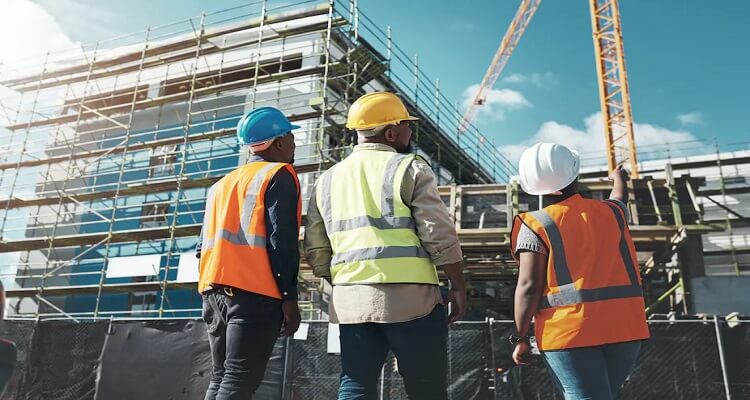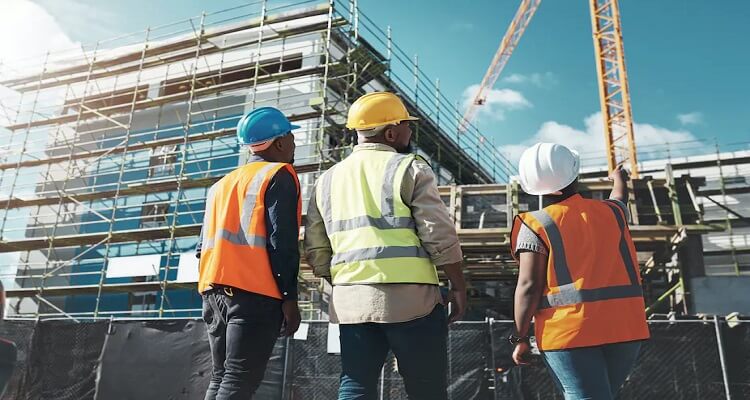
Transforming Nigerian Homes: Powerful Sustainable Construction Practices Shaping The Future
Introduction
In recent years, the global emphasis on sustainability has reached various sectors, including the construction industry. In Nigeria, a country known for its rapid urbanization and expanding population, the need for sustainable construction practices in residential projects is more pressing than ever. Sustainable construction practices not only contribute to environmental conservation but also promise economic benefits and improved living conditions. This article delves into the significance of sustainable construction practices in Nigerian residential projects, exploring their benefits, challenges, and practical implementation strategies.
In an age marked by climate change, depleting natural resources, and environmental degradation, sustainable construction in Nigerian residential projects has emerged as a crucial solution—one that holds the promise of a greener and more resilient future. Across cities like Lagos, Abuja, and Port Harcourt, the clamour for environmentally responsible and economically viable building practices is reshaping how homes are designed, built, and lived in.
Sustainable construction, also known as green building, refers to the practice of creating structures and using processes that are environmentally responsible and resource-efficient throughout a building’s life cycle. From site selection and design to construction, operation, maintenance, and eventual deconstruction, sustainability influences every phase. In Nigeria, the growing pressure from urbanization, rapid population growth, and insufficient infrastructure has brought about the urgent need for residential housing that is not only affordable and durable but also eco-friendly.
The Nigerian residential sector, a major contributor to carbon emissions and energy consumption, plays a vital role in the country’s environmental impact. Yet, ironically, it is also the segment most ripe for positive transformation. By adopting sustainable construction practices, stakeholders—developers, architects, engineers, investors, and policy-makers—can curb energy usage, reduce waste, minimize pollution, and build more resilient communities. These benefits aren’t merely ecological; they are economic and social as well.
While Nigeria’s construction industry faces unique challenges—from inconsistent power supply to limited access to green materials—new opportunities are emerging. Technological innovation, global climate commitments, and increasing awareness among urban dwellers have made sustainable construction not just desirable, but necessary. The rise of eco-conscious consumers, especially among millennials and Gen Z, has driven demand for homes that align with values like efficiency, health, and sustainability.
One of the fundamental principles of sustainable construction is energy efficiency. Residential buildings in Nigeria often suffer from poor insulation, inefficient lighting, and lack of ventilation, leading to high electricity consumption. Integrating passive design elements—like orientation, natural lighting, and ventilation—can drastically cut energy usage. Solar panels, LED lighting, and energy-efficient appliances are becoming more accessible, helping homeowners reduce their environmental footprint and save on utility bills.
Material selection is another cornerstone. Sustainable construction favours renewable, locally-sourced, and low-impact materials such as bamboo, recycled metal, compressed earth blocks (CEB), and fly ash cement. These not only reduce the carbon footprint of construction but also support the local economy. In rural and peri-urban areas, traditional building techniques like adobe and rammed earth are being revived and modernized to meet today’s structural and aesthetic standards.
Water efficiency is equally important, especially in regions facing erratic rainfall and water scarcity. Rainwater harvesting systems, low-flow plumbing fixtures, and greywater recycling can greatly reduce household water consumption. Landscaping using native and drought-resistant plants can also minimise water usage, enhancing overall building sustainability.
Furthermore, waste reduction during construction and occupancy is critical. Techniques such as prefabrication, modular construction, and smart material management prevent unnecessary debris and encourage recycling and reusability. Efficient construction management also results in time and cost savings—making green projects economically feasible even on tight budgets.
Importantly, sustainable construction also focuses on indoor environmental quality (IEQ), ensuring that residents live in healthier spaces. The use of non-toxic materials, good ventilation systems, and daylight access improve air quality and well-being. Studies show that people living in green homes experience fewer respiratory illnesses and better mental health, highlighting the direct link between sustainability and quality of life.
On a broader scale, sustainable residential projects contribute to urban resilience. As cities face threats from flooding, heatwaves, and other climate risks, green infrastructure—like permeable pavements, green roofs, and storm water management systems—helps communities withstand and recover from environmental shocks.
Nigeria’s government and regulatory bodies have begun taking steps toward mainstreaming sustainability. Although there is no binding national green building code yet, initiatives like the Nigerian Building Energy Efficiency Code (BEEC), the Nigerian Green Building Council (NGBC), and the Energy Commission of Nigeria’s Solar Home System programme point in the right direction. Collaborations with global entities such as the International Finance Corporation (IFC) and UN Habitat have also spurred progress.
However, the journey is far from over. Barriers such as lack of awareness, inadequate policies, high upfront costs, and skill gaps continue to hinder widespread adoption. To truly unlock the potential of sustainable construction in Nigerian residential projects, a multifaceted approach is required—one that includes strong government policies, financial incentives, public education, and private sector innovation.
Sustainability must become a shared responsibility. Developers should adopt green certification standards like EDGE or LEED. Banks should offer green mortgages and loans for eco-friendly home improvements. Government agencies must enforce standards and incentivise sustainable practices. And, importantly, citizens must demand and support these changes by making informed housing choices.
In essence, sustainable construction is not just a building trend—it is a movement that aligns with the global Sustainable Development Goals (SDGs), particularly SDG 11 (Sustainable Cities and Communities), SDG 7 (Affordable and Clean Energy), and SDG 13 (Climate Action). Embracing this movement in Nigeria’s residential projects is not just about protecting the environment; it’s about building a future where every Nigerian can live in a home that is safe, healthy, affordable, and sustainable.
Understanding Sustainable Construction
Sustainable construction refers to building methods and practices that aim to reduce the environmental impact of construction activities while improving the quality of life for inhabitants. These practices encompass various strategies, including efficient use of resources, minimizing waste, reducing energy consumption, and using eco-friendly materials. In the context of Nigerian residential projects, sustainable construction practices are crucial due to the country’s unique environmental and economic challenges.
The Importance of Sustainable Construction in Nigeria
1. Environmental Impact
Nigeria is blessed with diverse natural resources, but its rapid urban expansion has led to significant environmental degradation. Traditional construction methods often exacerbate issues such as deforestation, pollution, and soil erosion. By adopting sustainable construction practices, Nigeria can mitigate these impacts. For instance, using locally sourced materials reduces transportation emissions and supports local economies, while implementing energy-efficient technologies can reduce the carbon footprint of residential buildings.
2. Economic Benefits
Sustainable construction practices can lead to substantial long-term cost savings. Although the initial investment in green technologies might be higher, the reduction in energy and water consumption translates into lower utility bills. Moreover, sustainable buildings often have higher market value and attract environmentally conscious buyers. In a country where economic stability is critical, these financial benefits are significant.
3. Health and Well-being
Sustainable construction practices contribute to healthier living environments. For instance, using non-toxic materials and ensuring proper ventilation can reduce indoor air pollution, which is particularly important in densely populated urban areas. Improved living conditions enhance the overall quality of life, leading to better health outcomes for residents.
Key Sustainable Construction Practices
1. Energy Efficiency
Energy efficiency is a cornerstone of sustainable construction. In Nigeria, where energy access and reliability are ongoing challenges, incorporating energy-efficient technologies can make a considerable difference. This includes:
- Solar Energy: Utilizing solar panels to generate electricity and solar water heaters to provide hot water reduces reliance on the grid and cuts energy costs.
- Energy-Efficient Appliances: Installing energy-efficient appliances and lighting systems lowers energy consumption and minimizes the environmental impact.
- Insulation and Ventilation: Proper insulation and ventilation reduce the need for artificial heating and cooling, which is crucial in Nigeria’s diverse climate zones.
2. Water Conservation
Water scarcity is a significant concern in Nigeria, making water conservation essential in residential construction. Effective strategies include:
- Rainwater Harvesting: Collecting and storing rainwater for non-potable uses such as irrigation and flushing toilets helps reduce the demand on municipal water supplies.
- Water-Efficient Fixtures: Installing low-flow faucets, toilets, and showerheads minimizes water consumption without compromising functionality.
- Greywater Recycling: Reusing greywater from sinks and showers for irrigation purposes reduces overall water use and supports sustainable landscaping.
3. Sustainable Materials
The choice of building materials plays a crucial role in sustainable construction. In Nigeria, sustainable material options include:
- Locally Sourced Materials: Using materials that are readily available locally reduces transportation emissions and supports the local economy.
- Recycled and Reclaimed Materials: Incorporating recycled materials, such as reclaimed wood or recycled metal, reduces the need for new resources and minimizes waste.
- Eco-Friendly Finishes: Opting for non-toxic paints, sealants, and finishes improves indoor air quality and reduces the environmental impact.
4. Waste Management
Effective waste management practices are essential for minimizing the environmental impact of construction projects. This includes:
- Construction Waste Reduction: Implementing measures to reduce waste generation, such as precise material measurements and reusing leftover materials, helps minimize the environmental footprint.
- Recycling and Reuse: Establishing recycling programs for construction debris and encouraging the reuse of materials reduces landfill waste and promotes a circular economy.
- Proper Disposal: Ensuring that hazardous materials are disposed of safely and in accordance with regulations prevents environmental contamination.
Challenges and Solutions
1. High Initial Costs
One of the primary challenges of sustainable construction is the perception of high initial costs. While sustainable technologies and materials may require a higher upfront investment, the long-term savings and benefits outweigh these costs. Government incentives, such as tax breaks and grants for green building projects, can help offset initial expenses.
2. Limited Awareness and Training
The adoption of sustainable construction practices in Nigeria is hindered by limited awareness and a lack of skilled professionals. Addressing this issue requires comprehensive education and training programs for architects, builders, and contractors. Partnerships with educational institutions and industry organizations can facilitate knowledge sharing and capacity building.
3. Regulatory Framework
The regulatory framework for sustainable construction in Nigeria is still developing. Establishing clear guidelines and standards for green building practices can provide a roadmap for the industry and encourage wider adoption. Collaboration between government bodies, industry stakeholders, and environmental organizations is essential to create and enforce effective regulations.
Conclusion
Sustainable construction practices in Nigerian residential projects offer a path towards a more environmentally friendly, economically viable, and healthier future. By embracing energy efficiency, water conservation, sustainable materials, and effective waste management, Nigeria can address its pressing environmental challenges while enhancing the quality of life for its residents. Despite the challenges of high initial costs, limited awareness, and regulatory gaps, the benefits of sustainable construction far outweigh the hurdles. Through continued education, innovative solutions, and supportive policies, Nigeria can lead the way in adopting sustainable construction practices and build a more sustainable future for all.
As we reflect on the growing momentum surrounding sustainable construction in Nigerian residential projects, it becomes clear that the shift towards greener practices is not only imperative but immensely beneficial. The challenges of environmental degradation, housing shortages, and energy inefficiency cannot be tackled through conventional methods. Instead, they demand innovative, inclusive, and environmentally responsible strategies that place sustainability at the forefront of residential development.
Sustainable construction offers a blueprint for building homes that do more than provide shelter—they promote health, ensure energy savings, protect natural ecosystems, and contribute to economic growth. Through mindful planning, selection of materials, efficient designs, and community engagement, Nigerian homes can be transformed into models of sustainability.
A key lesson from global best practices is that sustainability is not an endpoint but a journey. It is dynamic, constantly evolving with new technologies, materials, and insights. For Nigeria, embracing this journey requires commitment at every level of the construction ecosystem. Architects must design with climate in mind. Engineers must incorporate smart and energy-saving systems. Developers must seek out sustainable financing. Policy-makers must craft supportive frameworks that standardize and encourage eco-conscious construction. And consumers must demand homes that respect both people and the planet.
The economic arguments for sustainable construction are strong. Although the initial cost may be slightly higher, the long-term savings in energy bills, maintenance, and repairs more than compensate for this. Green buildings also enjoy higher market value, faster occupancy rates, and stronger brand reputation. Investors, both local and international, are increasingly prioritizing Environmental, Social, and Governance (ESG) metrics—making sustainable construction a magnet for impact-driven capital.
Moreover, the social dividends are equally compelling. Sustainable homes offer improved indoor air quality, natural lighting, noise reduction, and overall wellness—resulting in happier, healthier families. For low-income and vulnerable populations, sustainable housing can provide affordable solutions that do not compromise on safety, dignity, or comfort. This is crucial in a country where housing deficits affect millions of citizens.
From an environmental perspective, sustainable practices help Nigeria meet its international climate obligations under agreements like the Paris Accord. Reducing emissions, conserving water, minimizing waste, and protecting biodiversity are all vital steps toward ensuring a livable planet for future generations. Green homes play a pivotal role in building climate-resilient cities that can endure shocks and adapt to change.
However, success will depend on breaking down existing barriers. There is a pressing need for awareness campaigns that educate stakeholders about the benefits of sustainable construction. Training and capacity-building programs should be rolled out across institutions to equip professionals with green building skills. Financial institutions must be sensitized to develop sustainable financing products. Above all, regulations must be enforced consistently, with clear penalties for non-compliance and incentives for green innovation.
Collaboration will be the engine of change. Partnerships between government, private sector, academia, and civil society are essential to catalyst action and scale solutions. Pilot projects should be encouraged to demonstrate the viability of green housing in diverse contexts—from urban high-rises to rural homesteads. Digital platforms and data tools can also be leveraged to track progress, share knowledge, and foster transparency.
Ultimately, the dream of sustainable residential communities in Nigeria is not utopian. It is already being realized in pockets across the country—from smart housing estates in Lagos using solar grids to eco-villages in the North built with compressed earth blocks. These examples should inspire nationwide replication.
In conclusion, sustainable construction in Nigerian residential projects is not just a noble ideal—it is a powerful, transformative force. By adopting this approach, Nigeria can solve housing problems, protect the environment, create jobs, and improve the quality of life for millions. It is a future worth building—brick by green brick.
Let us, therefore, rise above the status quo. Let us build homes that reflect our hope, resilience, and responsibility. Let us champion sustainable construction—not tomorrow, but today.
Contact Us
For premier ways of Sustainable Construction Practices in Nigerian Residential Projects, contact Chaman Law Firm today. Our offices are conveniently located in Lagos, FCT Abuja, Ogun State, and the UK. We are readily available to assist you with your legal needs. Whether you require consultation, representation, or ongoing legal support, Chaman Law Firm is your trusted partner in Sustainable Construction Practices in Nigerian Residential Projects.
Call us at 08065553671 or email us at info@chamanlawfirm.com to schedule a consultation.
- Sustainable Construction
- Green Building
- Energy Efficiency
- Eco-friendly Materials
- Waste Management
- Renewable Energy
- Water Conservation
- Sustainable Housing
- Low-carbon Construction
- Environmental Impact
Chaman Law Firm: Your Trusted Legal Partner in Sustainable Construction Practices in Nigerian Residential Projects
By choosing Chaman Law Firm, you are selecting a team of dedicated professionals committed to providing exceptional guideline tailored to your unique needs. Let us be your advocate and guide in the complex world of Sustainable Construction Practices in Nigerian Residential Projects, ensuring your interests are protected and your goals are achieved.


